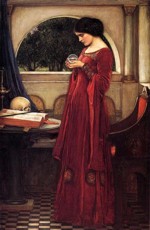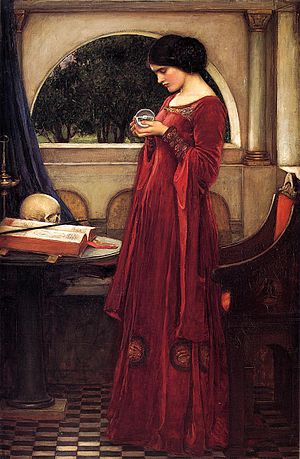Fiction

- Details
- Written by: Richard_McKie
- Parent Category: Ideas
- Category: Fiction
- Hits: 1122
As another test of ChatGPT I asked it: "in 2 thousand words, to write a fiction about a modern-day witch who uses chemistry and female charms to enslave her familiars". This is one of the motifs in my novella: The Craft (along with: the great famine; world government; cyber security and overarching artificial intelligence).
Rather alarmingly, two of five ChatGPT offerings, each taking around 22 seconds to generate, came quite close to the sub-plot, although I'm not keen on the style or moralistic endings. Here they are:

- Details
- Written by: Richard_McKie
- Parent Category: Ideas
- Category: Fiction
- Hits: 6709
Preface:
The Craft is an e-novel about Witchcraft in a future setting. It's a prequel to my dystopian novella: The Cloud: set in the the last half of the 21st century - after The Great Famine.
As I was writing The Cloud, I imagined that in fifty years the great bulk of the population will rely on their Virtual Personal Assistant (VPA), hosted in The Cloud, evolved from the primitive Siri and Cortana assistants available today. Owners will name their VPA and give him or her a personalised appearance, when viewed on a screen or in virtual-reality.
VPAs have obviated the need for most people to be able to read or write or to be numerate. If a text or sum is within view of a Cloud-connected camera, one can simply ask your VPA who will tell you what it says or means in your own language, explaining any difficult concepts by reference to the Central Encyclopaedia.
The potential to give the assistant multi-dimensional appearance and a virtual, interactive, body suggested the evolution of the: 'Sexy Business Assistant'. Employing all the resources of the Cloud, these would be super-smart and enhance the owner's business careers. Yet they are insidiously malicious, bankrupting their owners and causing their deaths before evaporating in a sea of bits. But who or what could be responsible? Witches?

- Details
- Written by: Richard_McKie
- Parent Category: Ideas
- Category: Fiction
- Hits: 269540
Introduction:
The Craft is an e-novella about Witchcraft in a future setting. It's a prequel to my dystopian novella: The Cloud: set in the last half of the 21st century - after The Great Famine.
Since writing this I have added a preface, concerning witchcraft, that you can read here...
- Details
- Written by: Richard_McKie
- Parent Category: Ideas
- Category: Fiction
- Hits: 30794
This story is available as a download for e-book readers
He was someone I once knew, or so I thought. One of those familiar faces I thought I should be able to place.
What was he to me? An ex-colleague, the friend of a friend, someone from school? In appearance he's a more handsome version of me, around the same height and colouring. Possibly slimmer, it’s hard to tell sitting. Maybe younger? But not young enough to be one of my children’s friends. I just couldn’t remember.
- Details
- Written by: Richard_McKie
- Parent Category: Ideas
- Category: Fiction
- Hits: 10652
The fellow sitting beside me slammed his book closed and sat looking pensive.
The bus was approaching Cremorne junction. I like the M30. It starts where I get on so I’m assured of a seat and it goes all the way to Sydenham in the inner West, past Sydney University. Part of the trip is particularly scenic, approaching and crossing the Harbour Bridge. We’d be in The City soon.
My fellow passenger sat there just staring blankly into space. I was intrigued. So I asked what he had been reading that evoked such deep thought. He smiled broadly, aroused from his reverie. “Oh it’s just Inferno the latest Dan Brown,” he said.
